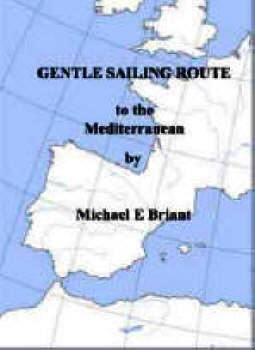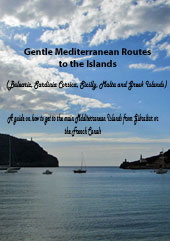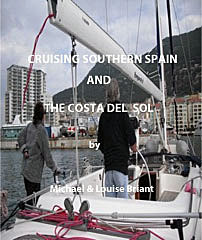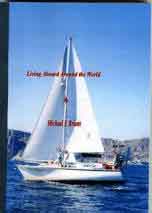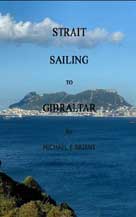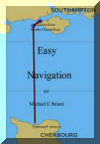Helicopter Rescue
off - LADY MAGARET' ISLAND - Brisbane Australia
From Sydney harbour we made the 600 hundred mile passage north past Brisbane, non stop, to where it is a lot warmer. The Australians run a volunteer coastguard system and as we sailed up the coast with mainly favourable winds, I would check into each volunteer coastguard station as we passed it. They would acknowledge and pass our passage information onto the next station. Very like the UK passage report system except operating on SSB. Sometimes in the early hours of the morning, the operators were a little bemused to hear from me, but overall it worked well.
I decided to head for the romantic sounding coral atoll of 'Lady Musgrave’s Island'. It is opposite a town called Gladstone, about 50 miles off shore. I anchored with 5 other boats in the charming lagoon. Sandy beaches and palm trees, it is a well-tended nature reserve and a pleasant place to visit.
Having explored the island, swum between the coral heads and chatted to Colin, the skipper of a 30 ft steel boat who was also heading north with his teenage son,
I returned to Bambola where she lay anchored close to the island and checked the weather forecast. It was not good with strong winds forecast so along with two of the other cruisers I move out to the centre of the lagoon and re-laid the anchor with a lot of chain out and prepared for a blow.
That night it really did blow. The lagoon, protected from all sides by the substantial coral reef still permitted the wind and waves came howling across producing white horses in the lagoon as huge waves broke outside. Directly astern lay the island and of course the reef. With 60 meters of chain out in the shallow waters, Bambola held firm to her anchor. During the night I went on deck frequently. In the moonlight could see the other two boats who had anchored near the centre of the lagoon were also holding firm but had now been joined by the little steel sloop ‘Vanhi’ with Colin and his son.
Towards dawn, I saw ‘Moonfleet’, a large ketch was still anchored very close to the island and reef and that Vanhi was motoring around the lagoon – clearly in trouble.
Colin in Vanhi, seeing me on deck, made his way closer and told me he had lost two anchors during the night. He had also got a warp around his prop and had dived, in the darkness, in storm conditions, to cut it off and now was rapidly loosing engine power and would I pass him a line so he could hang off our stern!
A very difficult moment for me. I had to make a fast decision, as the Vanhi was drifting away, blown by the wind, towards the reef. Whilst Bambola was holding well on her anchor and 60 mtrs of chain I was not certain if it would all hold two heavy boats in what were now storm force winds. Bambola might start to drag as well. Vanhi was in serious trouble and if I refused, would soon go on the reef because of the lack of power in her engine. Should I risk the possibility of two boats being wrecked or allow the certainty of one boat going on the reef?
Reluctantly I assembled every bit of heavy-duty warp in Bambola and tried to throw a line to Vanhi. Just didn’t work in the strong wind. We then took a lifebuoy and tied a light line to it and threw it towards Vanhi as she struggled to maintain position under her failing engine. As anticipated the wind blew the lifebuoy across the water where they were able to pick it up, pull in the light line to which we had attached the heavy duty warp and Vanhi was able to secure the heavy warp to her bows.
It was not a comfortable situation. Vanhi was veering around all over the place and pulling Bambola’s stern around. We remained in this situation for about an hour. I kept my hand on the cockpit knife ready to cut the tow if I felt Bambola’s anchor start to pull out. Then the decision was taken away from me. The tow warp sank at one point and jammed itself in a bommie – coral head – and pulled Bambola’s stern round towards the wind. In the morning light, I could see the line breaking in the coral head. I called to Colin and warned him what was happening and as the line broke he cast of and tried to sail, now engineless out of trouble. Impossible of course! Vanhi was being blown down wind, towards the reef. Meanwhile Bambola was in trouble still pinned against the wind with our end of the line jammed in the coral – I fastened a fender to the bitter end and threw the lot overboard for later recovery.
After a quarter of an hour of trying everything he new Colin, could not stop Vanhi from hitting the reef. We spoke on VHF as we had mainly communicated all the time. As Vanhi was pushed by the breakers, further onto the reef, she became broadside to the waves which started to break right over her and began to fill her cabin.
With my SSB radio I called Australian volunteer coast guard service that I had been communicating with during my passage up from Sydney. I explained the situation which I thought had become life threatening. To my surprise the coastguard told me conditions were too bad to launch their rescue boat and there was nothing they could do! He suggested I launch my dinghy and try to effect a rescue myself! I did not even try to explain the prevailing conditions in which a dinghy would founder in minutes and anyway be unable to get anywhere near Vanhi now well up on the reef! The volunteer coast guard said that possibly the police helicopter might help and I should telephone the police and here was the number. I tried to explain I was a British boat with no mobile telephone and even if I had, I doubted if it would reach land telephone antenna. The coast guard regretted that was all he could do.
One of the other boats in the lagoon called me on VHF and said they had a satellite telephone and had called the police who were sending their helicopter. The wind strength was still increasing and by the time the police helicopter arrived, about half an hour later, the pilot reported 65knots. Colin, in Vanhi, a very experienced professional diver, knew the dangers of the knife sharp coral, swept by waves. The next problem that arose was Vanhi’s VHF was now not working properly – probably because the battery was being submerged in sea water, so his transmissions were weak. He could hear me but not hear the helicopter pilot and the pilot could not properly make out what he was transmitting. As I could hear both clearly, I relayed all the communications. The pilot asked them to put on life jackets and shoes to be able to withstand the cutting coral underfoot.
The rescue helicopter descended to a few feet above the waves and the rescue diver dropped into the water and stood on the coral reef. Colin got his son overboard onto the wave swept reef and they walked through the waves towards each other. The helicopter then lowered a winch wire and the diver attached the two of them and signalled the helicopter to lift. Buffeted by the gusting wind the pair were raised above the level of the waves and the helicopter headed for the island and deposited them on the beach. The diver then climbed back into the helicopter and flew back to Vanhi. Colin experienced in these matters from his Australian Royal Navy days timed his entry into the water so that the rescue diver spent as little time as possible on the coral.
As this bit of drama unfolded, I received a Mayday from the ketch ‘Moonfleet’ to say they had lost the anchor and was drifting onto the reef. I relayed the message to the police helicopter. In very demanding conditions, the helicopter and crewmen and diver lifted the four crew off Moonfleet and deposited them one by one onto the beach. The helicopter then landed briefly to pick up some of the ‘shipwrecked’ crew whilst Colin and the skipper of Moonfleet decided to wait on the island to see what would become of their craft after the storm abated. The helicopter headed back to Gladstone. The two skippers intended thumbing a lift back from one of the tourist boats that regularly bring parties of divers and visitors to the island.
I settled down to wait for the weather to moderate. The next morning Vanhi had vanished. The weather had begun to moderate but overnight the steel sloop had been pushed all the way over the reef into the very deep water on the other side. Moonfleet had also been pushed up onto the reef and was now up on the reef on the southern side of the island.
On the third day, the wind had moderated and the swell reduced to a size I felt made it possible to find the narrow pass out of the reef and sail the fifty odd miles to Gladstone. It was a bit lumpy but the relief of being away from Lady Margaret, with the sad site of ‘Moonfleet’ on her side high on the reef more than compensated. Gladstone was one of the places I considered running to when the storm warning came out. The chart showed a several mile long channel, well marked leading to the harbour and marina. I had decided I did not want to try getting into a strange port, at night in a gale having to follow a long twisting channel. I was right. Although the channel is very well marked, with lit piles, it has some serious doglegs and in the evening light, I found it difficult to follow.
Spent the next day visiting the coastguard station and doing some shopping and was surprised and delighted to see Colin the skipper of Vanhi walking down the pontoon towards Bambola. I greeted him and commiserated with the loss of his vessel. He broke into a broad grin and said she wasn’t lost! She had been found high and dry on a sandy beach some 20 miles north of Gladstone. He was wondering if I was still heading north if he could hitch a ride and have a look at her?
Next morning I followed the channel out of Gladstone and in very calm conditions sailed north until noon when we found Vanhi at low water in exactly the position Colin had been told she was in. Somewhat difficult place to anchor I let Colin take the dinghy and go ashore to examine his boat. An hour later he returned with a broad grin on his face saying apart from a few scratches the hull was sound and the rudder undamaged. The volunteer coastguard had offered to launch their rescue craft and pull her off the beach on the next spring tide.
Last I heard Colin and Vanhi were heading north to Borneo!
|
I am pleased to say this web site is who have been kind, helpful and understanding. I really recommend them |


